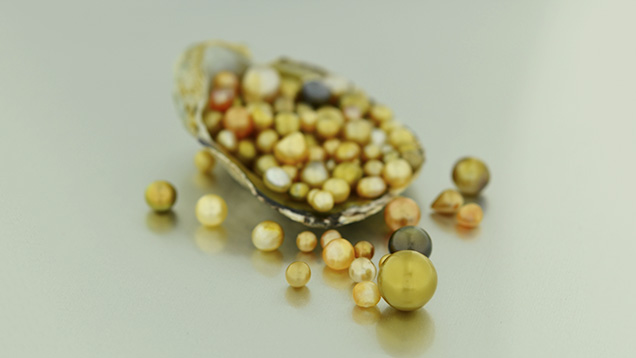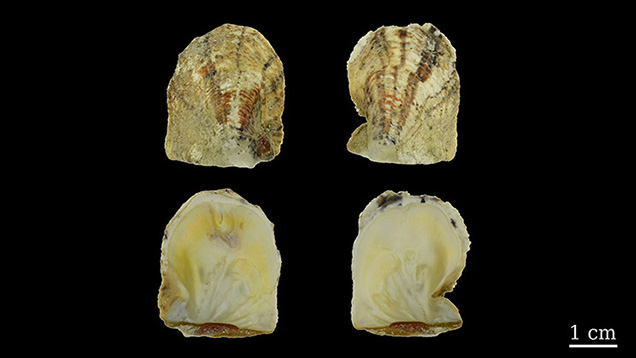Natural Pipi Pearls from Tahiti

Pinctada maculata is a bivalve mollusk (figure 2) found in the Pacific Ocean, particularly near French Polynesia and the Cook Islands, that may produce rare “poe pipi” (better known as “pipi”) pearls. There were several unsuccessful attempts in the 1950s to produce cultured pipi specimens. Today, all such pearls are considered natural.

Figure 2. The two valves of a typical Pinctada maculata shell specimen (interior and exterior view). Photo by Olivier Segura.
Different techniques are used to find the pearls. In one method, divers pick the largest shells of Pinctada maculata, then leave the shells on the beach in buckets full of salt water to putrefy. Three days later, the shells are selected and only the valves with blisters are kept. Deep in the bucket, one may occasionally find a few natural pearls. Kakaro (in the Paumotuan language) is considered the oldest technique for obtaining pipi pearls. During the dive, the largest shells are opened directly underwater to locate pearls.Most pipi pearls range from orange to cream, gray, and white, but the typical and most sought-after color is a deep golden color. The size of the pearls generally ranges from 1 to 4 mm. The pearl in the forefront of figure 1 has one of the best golden colors possible. It is an exceptionally large specimen measuring 9.6 mm in diameter, which the contributors believe to be the largest size documented for a pipi pearl.
Microradiography reveals internal structures typical for natural pearls: onion-like stacking of aragonite layers possibly containing a calcitic core. Although Raman scattering, UV-visible reflectance, or UV luminescence spectrometry have helped identify the mollusk species in some cases, preliminary results with Pinctada maculata are still not conclusive. Hence, it is not possible to identify with certainty the exact mollusk from which these pearls came.



